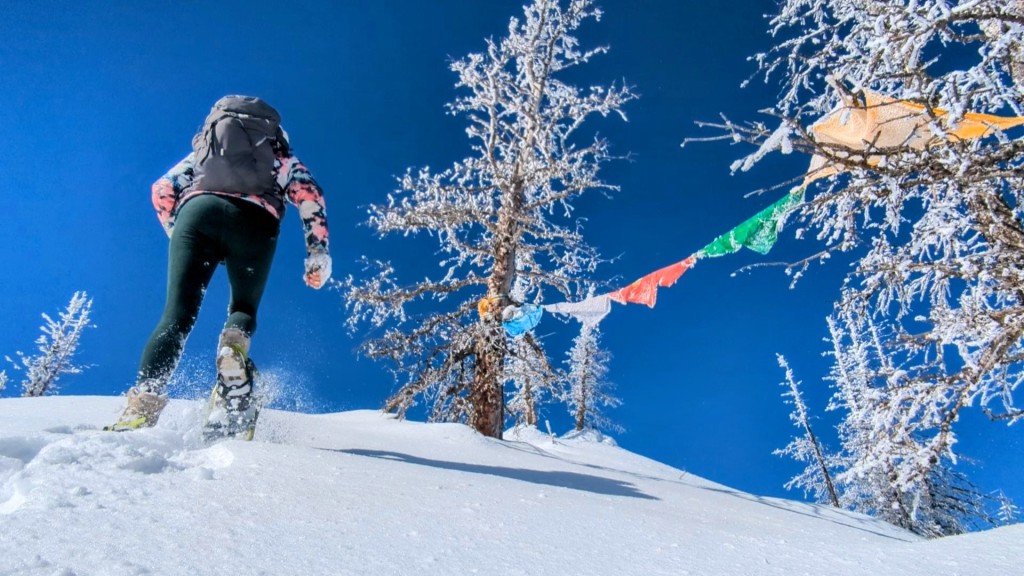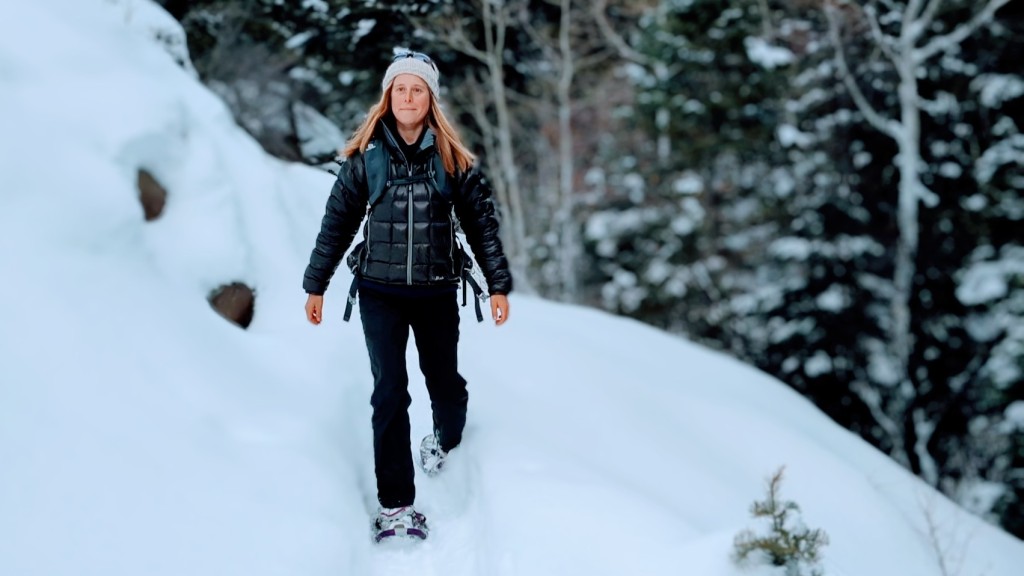We conducted a thorough testing of our top women's snowshoes. We gathered a group of women with varying body shapes and weights to evaluate their performance. We sent them to roam across the Colorado Rockies and Manti-La Sal mountains for several months. They hiked miles in each shoe, traversing varied terrain, from deep powder to quiet forests with no footprints to icy trails. We assessed every aspect of each shoe, comparing their flotation, walkability for different body types, and ease of use for the bindings. All the shoes we tested are unisex or explicitly designed for women.
Our testers included individuals with varying levels of snowshoeing experience, ranging from beginners to seasoned snowshoe enthusiasts and even backcountry skiers, snowboarders, and thru-hikers. Our lead tester was a former Park Service Ranger with experience guiding park visitors on winter ecology snowshoe hikes.
Flotation
Our top priority when evaluating snowshoes is their ability to float, as this is the most crucial factor in allowing individuals to explore new snowy landscapes and walk on frozen water without sinking. To assess flotation, we start by measuring the surface area of each snowshoe. A general rule of thumb is that the more surface area the snowshoe distributes over the snow, the better the flotation capacity of the snowshoe. We calculate surface area by multiplying the overall length by the average width. To determine the average width, we take measurements at three points along the snowshoe (¼, ½, and ¾) and then average those measurements.
To thoroughly test flotation, our most heavily weighted testing metric, we found deep, fresh snow to hike in. We walked each model in a line and compared the depth of footprints side by side. We assessed how the shoes felt to walk in deep snow and lift out of the powder. We pushed the weight capacity of some of the models to the point where we weren't floating very well. But taking off a snowshoe and stepping into the snow only to sink two to three feet revealed to us that, even at the weight limit, the added surface area of a snowshoe makes a huge difference.
Traction
Traction is one of the most essential metrics when choosing the right shoes for steep slopes and slippery conditions. We snowshoed through various situations and across all surfaces and angles to test the traction of different shoes. We looked for steep, icy slopes to climb and descend, tested black ice patches and slippery fresh powder on packed trails, and analyzed the traction systems on the bottom of each shoe. We paid attention to the toe crampons that could bite into the terrain, traction rails or teeth that could provide lateral traction, spikes, and any ridging of friction strategies in the shoe's frame. The shoes that provided the best traction kept us confident and upright in all situations.
Walkability
Walkability concerns how enjoyable the walking experience is in a snowshoe and if the stride ergonomics support natural movements and, for women specifically, happy hips. Walkability about women-specific needs meant we considered if each snowshoe accommodate a smaller foot and a narrower gait. Often, when women or smaller framed people wear men's snowshoes, they have to widen their gait, walk bow-legged, pronate, and turn their toes out a bit so as not to have one foot collide with the other with every step. To comprehensively test this metric, we had people with different body types and women with petite frames spend much time walking on every conceivable trail, all while paying close attention to how well the shoe would allow a normal and natural stride, which made us soar from our body having to accommodate an exaggerated stride. We also considered how light the snow was on our foot, the step precision afforded by how the binding hinged from the snowshoe, and a snowshoe's ability to shed snow.
Bindings
We want bindings that are both secure and comfortable to wear during our adventures, regardless of our range of motion. To test this, we spent a significant amount of time wearing each binding model, assessing their comfort and security. We also evaluated how easy they were to put on and take off, especially for beginners or those with cold hands who may struggle with fiddly straps. We took note of which models required readjustments and identified any pinch points that caused discomfort on long hikes. As we select the top-of-the-line models for our reviews, it wasn't surprising that most of the snowshoes performed well in terms of comfort and security. They are generally reliable and provide a sense of safety for users on all terrains. However, we did come across some issues during our time on icy-packed trails and snowdrifts, which we will address in our review.




